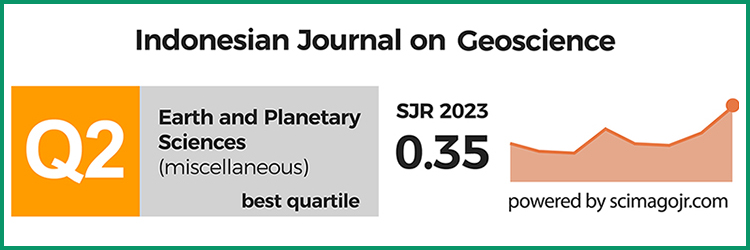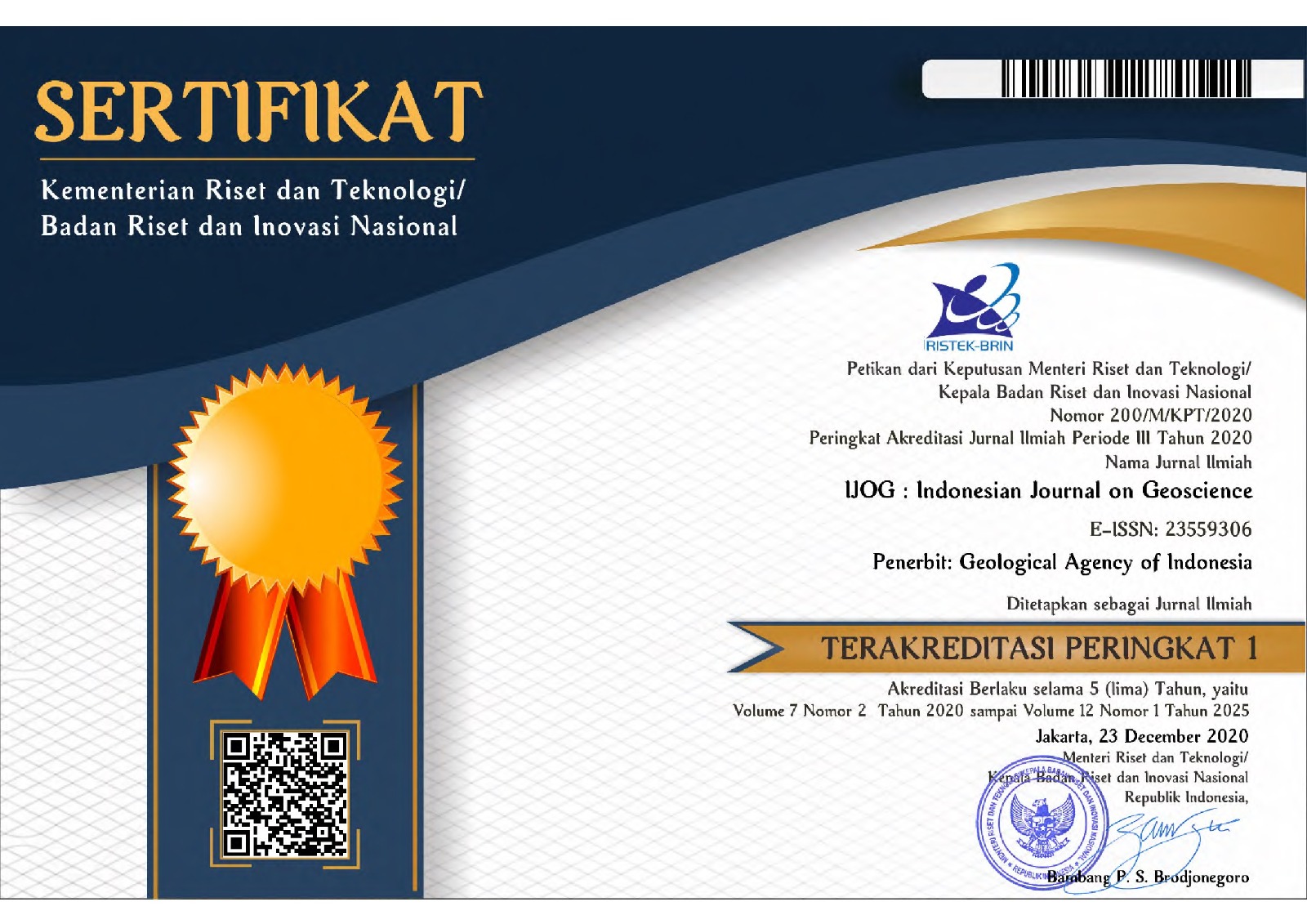Geology, Vein Textures, and Fluid Inclusions of the Cibeber Low-Intermediate Sulfidation Epithermal Au-Ag Orefield, Western Java
DOI:
https://doi.org/10.17014/ijog.8.2.157-175Keywords:
Epithermal, gold-silver, vein texture, Cibeber, IndonesiaAbstract
DOI:10.17014/ijog.8.2.157-175
This paper describes the results of surficial geological and alteration mapping combined with several laboratory analyses, including petrography, ore microscopy, ore geochemistry, and fluid inclusion studies, aimed at establishing the nature of mineralization and alteration in the Cibeber area, West Java, Indonesia, and developing a genetic model. The area forms part of the Bayah Dome Complex, which hosts several gold-silver deposits. It is underlain by andesitic lava, tuff breccia, and subordinate sandstone. Its structural framework consists of joints, normal faults, NE-SW dextral strike slip faults, and NW-SE strike-slip faults. Hydrothermal alteration can be divided into four types, viz. silicification, clay-silica, argillic, and propylitic. Mineralization is mostly hosted in quartz veins showing a variety of textures, including massive, colloform-crustiform, breccia, lattice bladed, comb, and saccharoidal. Ore minerals consist of native gold and silver, pyrite, chalcopyrite, sphalerite, galena, tennantite-tetrahedrite, covellite, malachite, hematite, and goethite, while the gangue minerals quartz, illite, epidote, and calcite. Four stages of mineralization/veining are recognized: early, middle (the main ore forming stage), late, and supergene. The highest obtained metal grades are 8.17 ppm Au, 113.6 ppm Ag, 1.23% Cu, 1.28% Pb, and 1.2% Zn. Fluid inclusions from mineralized veins yielded temperatures of 222 - 280°C and salinities of 0.36 - 1.31 wt.% NaCl eq. The hydrothermal fluids are interpreted to have been largely of meteoric origin with the mineralization having formed at a depth of about 258 - 270 m below paleosurface. Both low-sulphidation and intermediate-sulphidation styles of mineralization are present.



















